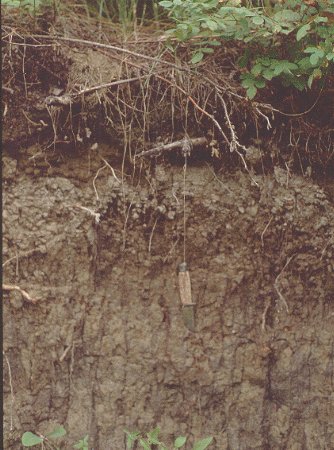 |
Orthic Gray Luvisolic Soils
Gray Luvisols usually occur under Boreal forest or forest-grassland transition
zones in wide range of climatic conditions. They are generally found in
the subhumid central to northern part of the Interior plains and in the
humid and perhumid a reas of eastern Canada. There is an estimated area
of 762,217 km2 of Gray Luvisols within the cooler Boreal, Cryoboreal and
Subarctic regions, 654,305 km2 under relatively cold Cryoboreal perhumid
to subhumid conditions, 52,435 km2 under cool, humid Bore al conditions
and 55,477 km2 in very cold Subarctic regimes.
These soils are developed mainly on glacial till, and glaciofluvial or lacustrine deposits. Most of the parent materials are weakly to moderately clacareous and high base status. Selected characteristics:1). The chroma of the Ae horizon is less than 3 unless the chroma of the parent material is 4 or more2). They have a Bt horizon 3). Do not have a Bf horizon 4). Do not have a fragipan 5). They may have an Ah or Ahe of less than 5 cm 6). They may have an Ap, but its dry color value must be 5 or higher 7). Absence of distinct mottlings within the upper 50 cm and prominent mottles does not occur at 50 to 100 cm depth. Common horizon sequence: LFH, Ae, AB, Bt, C or Ck CHE |